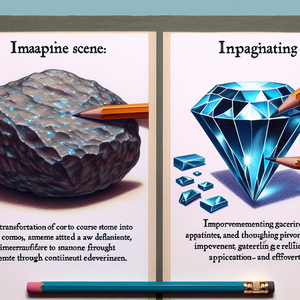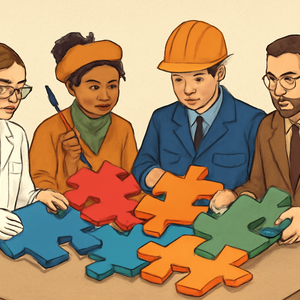Neurodiverse Employees Redefining Corporate Innovation

For decades, the standard corporate hiring process has inadvertently excluded those who don’t fit the mold of neurotypical thinking. Many neurodivergent individuals struggle with conventional interviews, social expectations, or rigid job structures, even as they possess exceptional abilities in areas such as pattern recognition, logical analysis, and sustained focus on complex problems. Companies like Microsoft have led the way in adapting their processes to better identify and support neurodivergent candidates. The Microsoft Autism Hiring Program, for example, emerged after the realization that traditional interviews were poor predictors of job success for autistic applicants. By redesigning the assessment to include multi-day workshops that focus on practical skills, Microsoft was able to uncover hidden talent pools. The outcomes have been significant: higher employee retention, increased job satisfaction, and notable breakthroughs in product development. Neurodiverse employees contributed novel solutions to persistent technical problems, proving that their unique thinking styles are invaluable assets in a tech-driven world.
Reimagining Roles for Strengths
The secret to harnessing neurodiverse talent lies not in asking employees to adapt to traditional roles, but in reimagining those roles to capitalize on individual strengths. At Ernst & Young (EY), this approach is embodied in the Neurodiversity Centers of Excellence. These centers form specialized teams of employees with autism, dyslexia, and other neurodivergent profiles, assigning them to complex data analysis and cybersecurity projects. The results speak for themselves: these teams consistently outperform neurotypical counterparts in both productivity and creative problem-solving. In one striking example, an EY neurodiverse team identified process improvements that saved the company hundreds of hours annually—simply by noticing inefficiencies that others missed. Similar models have been adopted by SAP, JPMorgan Chase, and Ford, all of whom report not just improved output, but fresh approaches to problem-solving and product development.
The Innovation Dividend
What makes neurodivergent employees so valuable in the context of innovation is their ability to think beyond conventional frameworks. Their unique cognitive profiles foster an environment where assumptions are challenged, and creative problem-solving flourishes. A Harvard Business Review study found that teams with neurodiverse members are more effective at tackling complex problems and less susceptible to groupthink, a phenomenon where consensus stifles new ideas. Consider a software developer with ADHD, who might harness rapid-fire ideation to excel at brainstorming sessions and prototyping, or a designer with dyslexia, whose heightened visual-spatial awareness enables them to spot inconsistencies others overlook. These differences are not deficits—they are sources of competitive advantage, especially when organizations prioritize inclusive cultures.
Building Inclusive Workplaces
However, unlocking the full potential of neurodiverse talent requires more than hiring. It demands a shift toward truly inclusive workplaces. This includes providing accommodations such as flexible work arrangements, sensory-friendly environments, and clear, written communication. Simple adjustments—like offering noise-canceling headphones or flexible schedules—can make a significant difference in job satisfaction and productivity. Equally important is equipping managers with training to understand and support neurodivergent colleagues. When organizations move away from deficit-based thinking and embrace neurodiversity as an asset, they cultivate teams that are not only more innovative but also more empathetic and adaptive. Recent labor market trends reflect this shift: according to recent data, inclusive hiring practices are taking center stage, with more employers actively recruiting diverse candidates and making hiring processes more accessible. Programs targeting underrepresented groups, including neurodiversity hiring initiatives, are on the rise, creating new opportunities for a wider range of talent and contributing to a more dynamic workforce.
Neurodiverse employees are fundamentally changing the way organizations approach innovation. By designing roles and environments that leverage their strengths, companies are tapping into a reservoir of hidden talent, driving creativity, productivity, and resilience. As more organizations recognize the value of neurodiversity, the future of work promises to be not only more inclusive but also more inventive and robust. Ultimately, embracing different ways of thinking is not just the right thing to do—it’s the smart thing to do. When we open the doors to neurodiverse talent, everyone stands to benefit.
Neurodiversity Program Manager
Microsoft, EY, JPMorgan Chase, SAP
Core Responsibilities and Skills
Designs and implements hiring and retention initiatives specifically aimed at sourcing, supporting, and advancing neurodivergent talent within organizations.
Collaborates with HR, DEI, and business leaders to develop inclusive policies, accessible assessments, and workplace accommodations.
Measures and reports on program outcomes, including employee engagement, retention, and business impact, using data-driven metrics.
Requires experience in HR, DEI strategy, or organizational development, as well as strong advocacy and communication skills.
Data Quality Analyst (Neurodiversity-Focused Teams)
Core Responsibilities and Skills
Conducts rigorous data validation, anomaly detection, and process optimization in environments that leverage neurodivergent strengths for pattern recognition and detail orientation.
Works in specialized teams (like EY’s Neurodiversity Centers of Excellence) to identify inefficiencies and propose actionable improvements.
Utilizes tools such as SQL, Python, or R for data analysis and reporting, often requiring strong visual-spatial or logical reasoning skills.
Preferred background: Experience in data analysis, familiarity with accessibility best practices, and an openness to collaborative, neurodiverse team structures.
Inclusive Product Designer
Microsoft, Google
Core Responsibilities and Skills
Develops digital products, interfaces, or environments that are accessible and intuitive for neurodiverse users, focusing on usability and sensory considerations.
Partners with neurodiverse stakeholders to gather feedback, conduct user testing, and refine designs to address real-world accessibility challenges.
Employs design thinking and universal design principles, with proficiency in tools like Figma, Sketch, or Adobe XD.
Requires experience in UX/UI design and a passion for inclusive innovation.
Workplace Accessibility Consultant
Core Responsibilities and Skills
Assesses and recommends modifications to physical and digital workplaces to accommodate sensory, communication, and organizational needs of neurodivergent employees.
Trains managers and staff on neurodiversity awareness, communication strategies, and legal compliance (e.g., ADA, UK Equality Act).
Develops individualized accommodation plans (e.g., noise-canceling equipment, flexible schedules) and monitors their effectiveness.
Common employers: Large corporations, specialized HR or DEI consultancies, and non-profits; requires expertise in occupational health, HR, or disability inclusion.
Cognitive Diversity Research Scientist
SAP, Ford
Core Responsibilities and Skills
Designs and leads studies on the impact of neurodiversity on team performance, innovation, and problem-solving within corporate settings.
Analyzes data from workplace pilots and interventions, publishing findings in peer-reviewed journals or white papers to inform HR and management best practices.
Advises organizations on evidence-based strategies for recruiting, integrating, and supporting neurodiverse talent.
Typical employers: Academic research centers, think tanks, or R&D divisions of corporations like SAP or Ford; often requires a Ph.D. in psychology, neuroscience, or organizational behavior and strong statistical analysis skills.


